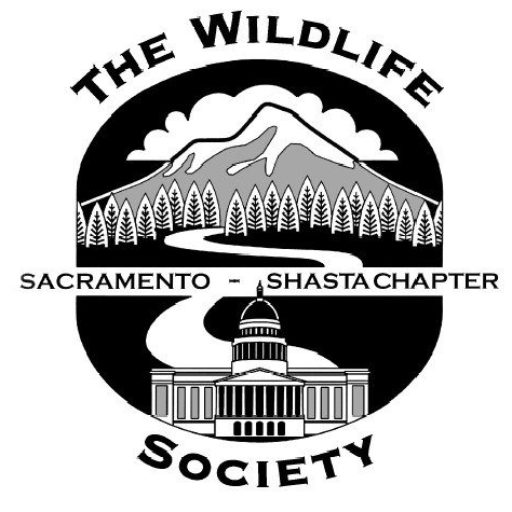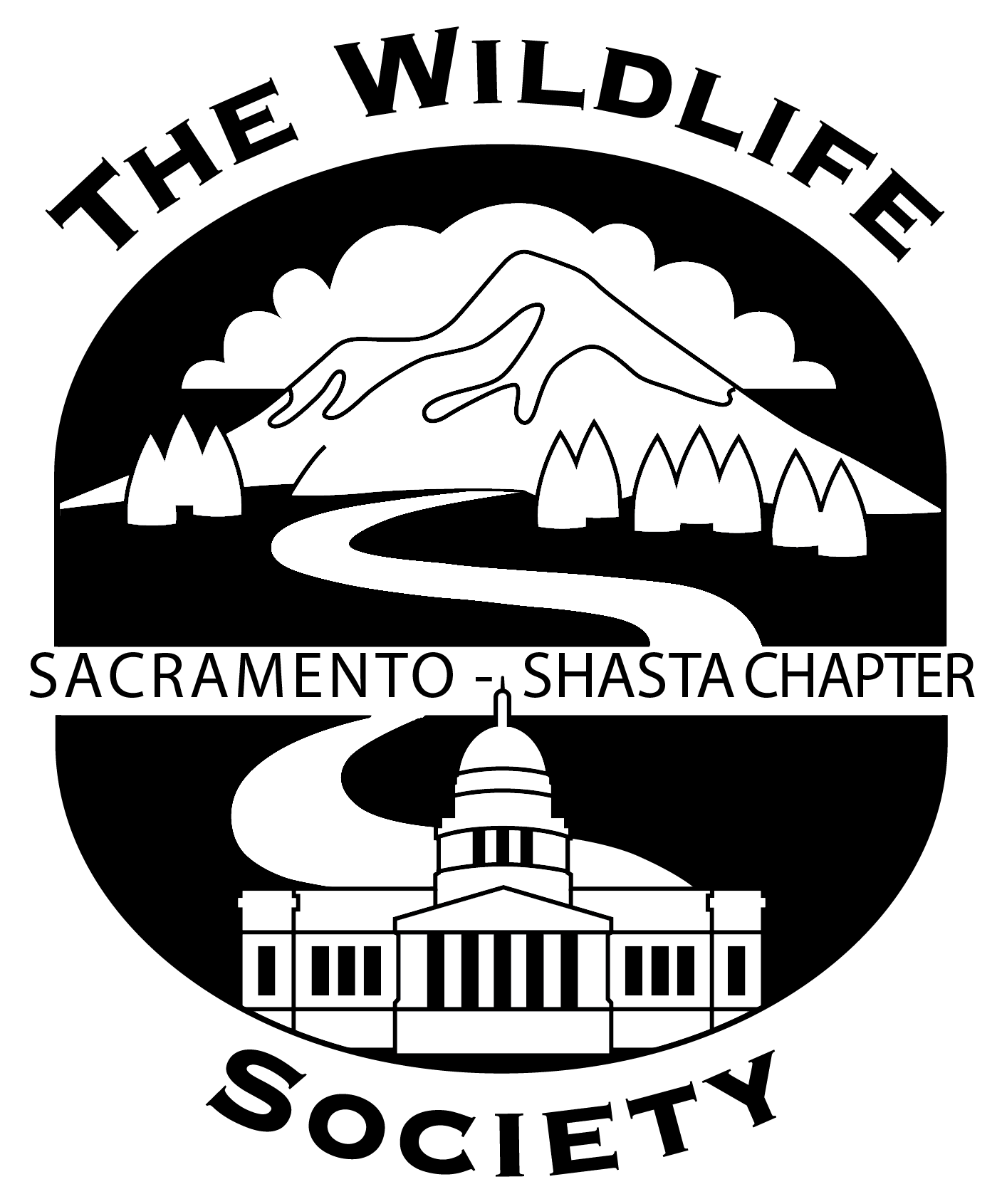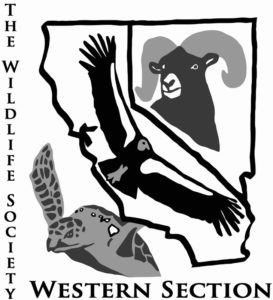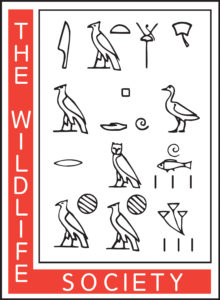
Sacramento-Shasta Chapter
We serve 23 counties throughout the Sacramento Valley and interior mountainous region of northern California. The region contains a range of ecosystems including valley floor wetlands, oak woodlands, montane forest types, high altitude alpine systems, and great basin sagebrush scrub. Collectively, these areas support many hundreds of wildlife species from Swainson’s Hawk to Pacific Fisher to Pronghorn Antelope.
We know that California will likely experience monumental ecological changes over the next century. California and its residents will have to decide how to balance conservation and social factors such as rapid population growth, economic prosperity, climate change, and an increasing demand for water. It is the role of our profession to provide the best scientific expertise possible to help Californians tackle this challenge.
Sacramento-Shasta Chapter Leadership Team
The Sacramento-Shasta Chapter is governed by a six-member elected Executive Board and nine Appointed Committees.
The Executive Board is composed of six officers (President, Vice President, Past President, Secretary, Treasurer, and The Wildlife Society Western Section Representative). The Appointed Committee Chairs are composed of nine chairs (Newsletter, Professional Development, Membership, Scholarship, Technology, Northern Area Representative, Student Outreach Coordinator, Conservation Affairs, and Diversity). For descriptions of officer and committee chair positions visit – Chapter Board Officer Positions
Western Section of The Wildlife Society
The Western Section of The Wildlife Society is comprised of over 1000 wildlife managers, biologists, ecologists, and students from California, Nevada, Hawaii, and Guam all devoted to the sustainable conservation of wildlife in the western United States region. There are 8 geographic area and 7 student Chapters that make up the Western Section.
In order to promote sustainable management of wildlife resources the Western Section hosts numerous workshops for wildlife professionals and students to provide the latest in wildlife techniques and offer specialized training for special status species. In addition the Western Section holds an annual meeting where wildlife professionals, students, and other wildlife enthusiasts share their latest information in the wildlife management field.
The Wildlife Society
For more than 75 years, The Wildlife Society has been influencing the future of wildlife and wild places for the benefit of generations to come.
Founded in 1937, the organization’s mission is “To inspire, empower, and enable wildlife professionals to sustain wildlife populations and habitats through science-based management and conservation.” The Wildlife Society enhances their members’ networking and learning opportunities, professional and career development, and provides numerous ways for them to get more involved in creating a better future for wildlife and their habitats.
Our nearly 10,000 members include:
- Scientists, managers, educators, technicians, planners, consultants and others who manage, conserve, and study wildlife populations and habitats.
- Students who are pursuing degrees and experience that will enable them to become the next generation of wildlife professionals.
- Supporters who help spread the word and take action on important wildlife and habitat issues.
The Wildlife Survey is an international organization committed to addressing national and international issues that affect the current and future status of wildlife in North America and throughout the world. Through their Position Statements, you can learn more about our stance on important issues in the areas of wildlife health, biological diversity, habitats, harvesting and hunting, invasive species, energy development and climate change, and human dimensions.
The Wildlife Society annually recognizes professional excellence, outstanding achievement, and highlights contributions to wildlife science and management through their Awards Program. The first The Wildlife Society award (Honorary Membership) was bestowed on J.N. (Ding) Darling in 1938, just one year after the founding of The Wildlife Society.
The Wildlife Society Leadership Team
The Wildlife Society is governed by a 13-member Council.
The Council is composed of four officers (President, President-Elect, Vice President, and immediate Past President), eight Section Representatives, one from each of The Wildlife Society seven U.S. sections (Northeast, Southeastern, North Central, Central Mountains and Plains, Southwest, Northwest and Western) and one from the Canadian Section, and one Student Liaison appointed by the Student Development Working Group.
Officers are elected by the full The Wildlife Society membership. Section Representatives are elected by The Wildlife Society members living in that particular Section.
The senior staff at the organization’s headquarters in Bethesda, Maryland includes an Executive Director, Chief Operating Officer, Director/Editor-in-Chief of Publications and Communications, and the Director of Government Affairs.
The Wildlife Society Mission
The Wildlife Society is committed to a world where humans and wildlife co-exist. They work to ensure that wildlife and habitats are conserved through management actions that take into careful consideration relevant scientific information. They create opportunities for this by involving professional wildlife managers, disseminating wildlife science, advocating for effective wildlife policy and law, and building the active support of an informed citizenry.
The mission is to represent and serve the professional community of scientists, managers, educators, technicians, planners, and others who work actively to study, manage, and conserve wildlife and habitats worldwide.
The members of The Wildlife Society manage, conserve, and study wildlife populations and habitats. They actively manage forests, conserve wetlands, restore endangered species, conserve wildlife on private and public lands, resolve wildlife damage and disease problems, and enhance biological diversity. The Wildlife Society members are active across the United States, Canada, and Mexico, as well as internationally.
The products of The Wildlife Society include essential, practical, and objective information for wildlife professionals. They provide research, policy information, and practical tools in print and electronic forms, along with vibrant professional networks that allow solutions to wildlife conservation and management challenges to be anchored in science.
University of California Davis Student Chapter
The Wildlife Society University of California Davis Student Chapter is a pre-professional student organization that connects students to opportunities and present research, learn more about animals and provides networking and training opportunities for future wildlife conservation and management fields. As a club, they also take field trips to various natural sites in the Davis area and interact with other student chapters. Graduates and undergraduate students welcomed.
Other Area Chapters
- California North Coast Chapter: Del Norte, Humboldt, and Mendocino Counties.
- San Francisco Bay Area Chapter: Marin, Sonoma, Mendocino, Lake, Napa, Solano, Contra Costa, Alameda, Santa Clara, Santa Cruz, San Mateo, and San Francisco Counties.
- San Joaquin Valley Chapter: Fresno, Kern, Kings, Madera, Mariposa, Merced, San Benito, Stanislaus, and Tulare Counties.
- Southern California Chapter: Los Angeles, Orange, San Bernardino, San Diego, Riverside, Imperial, and Ventura Counties.
- California Central Coast Chapter: Santa Barbara, San Luis Obispo, and Monterey Counties.
- Nevada Chapter: State of Nevada and Inyo and Mono Counties.
- Hawaii Chapter: State of Hawaii.
Other Student Chapters
- Humboldt State Student Chapter
- San Francisco State Student Chapter
- UC Santa Barbara Student Chapter
- University of Nevada, Reno Student Chapter
- Cal Poly, San Luis Obispo Student Chapter
- UC Berkeley Student Chapter


